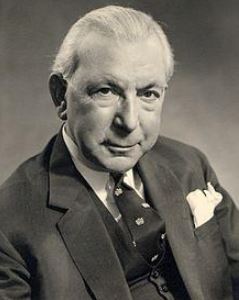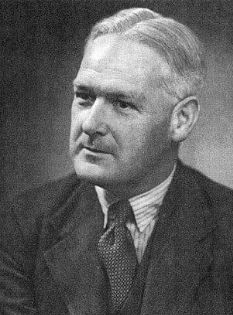
In 1965 Sir Austin (“Tony”) Bradford Hill, professor emeritus of medical statistics in the University of London, gave a lecture to the Royal Society of Medicine’s newly formed Section of Occupational Medicine, of which he was the president. Henry Cohen, Lord Cohen of Birkenhead, was the president of the society itself at the time.
In his lecture, titled “The Environment and Disease: Association or Causation?”, Hill posed a problem: “Our observations reveal an association between two variables, perfectly clear-cut and beyond what we would care to attribute to the play of chance. What aspects of that association should we especially consider before deciding that the most likely interpretation of it is causation?” Hill wisely eschewed a philosophical discussion of the meaning of “causation”, and instead described what he called “aspects of an association” and “nine different viewpoints” that he suggested could help in analysing causation in such associations.

The published version of Hill’s lecture has been cited over 7600 times, according to Google Scholar, including over 50 citations of the version that was published in the Journal of the Royal Society of Medicine in 2015. His nine viewpoints have almost always been called “criteria”, even though they are, all but one, not criteria at all.
Last week, I discussed the versatile IndoEuropean root (S)KER, with meanings such as cut, pluck, scratch, and separate. A metathetical variant, KREI, extends these meanings to ideas of distinguishing things from each other and sieving as a separating mechanism.
In Greek the verb κρίνειν means to separate, giving us the many adjectives that describe glands whose secretions separate in different ways:
- apocrine—describing glands whose cells lose their protoplasm during secretion;
- autocrine—describing glands whose cells have receptors for the substance they secrete;
- eccrine—describing sweat glands that secrete without loss of protoplasm;
- endocrine—describing glands whose secretions drain into blood or lymph;
- exocrine—describing glands whose secretions drain via ducts into cavities;
- holocrine—describing glands whose secretions are produced by disintegration of their cells;
- neurocrine, neuroendocrine—describing secretion by cells of neural origin or in response to neural stimulation;
- paracrine—describing hormones whose effects are confined to tissues in the vicinity of the glands secreting them.
The word “secretion” comes from the same root, through the Latin derivative, cernere, to decide or determine, giving us words such as certain, ascertain, concern, decree, discern, disconcert, discrete, and through secernere, to separate, secret, secretary, secrete, and secretion.
The holes in the cribriform plate in the ethmoid bone, through which the branches of the olfactory nerve pass, give it the appearance of a sieve (Latin cribrum).
Add MEN (to think), and we get KREI-MEN. In Latin crimen means a charge or accusation, distinguishing, through the scrutiny of evidence, whether someone is or is not a criminal.
From κρίνειν comes the noun κρίσις, discrimination, giving us crisis, the point at which a disease changes, leading to recovery or death. A critic discriminates good from bad, or tries to.
A criterion is “a test, principle, rule, canon, or standard, by which anything is judged or estimated” (Oxford English Dictionary). It distinguishes one thing from another by strict tests—criteria need to be met for the tests to be passed.
After describing his viewpoints, Hill wrote, “What I do not believe . . . is that we can usefully lay down some hard and fast rules of evidence that must be obeyed before we accept cause and effect. None of my nine viewpoints can bring indisputable evidence for or against the cause-and-effect hypothesis and none can be required as a sine qua non. What they can do, with greater or less strength, is to help us to make up our minds on the fundamental question—is there any other way of explaining the set of facts before us, is there any other answer equally, or more, likely than cause and effect?” Hill’s viewpoints are not criteria. We could just call them, as he did, “viewpoints” or, in the modern style, “guidelines”.
 Jeffrey Aronson is a clinical pharmacologist, working in the Centre for Evidence Based Medicine in Oxford’s Nuffield Department of Primary Care Health Sciences. He is also president emeritus of the British Pharmacological Society.
Jeffrey Aronson is a clinical pharmacologist, working in the Centre for Evidence Based Medicine in Oxford’s Nuffield Department of Primary Care Health Sciences. He is also president emeritus of the British Pharmacological Society.
Competing interests: None declared.
